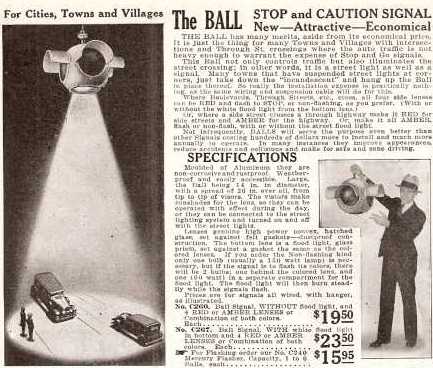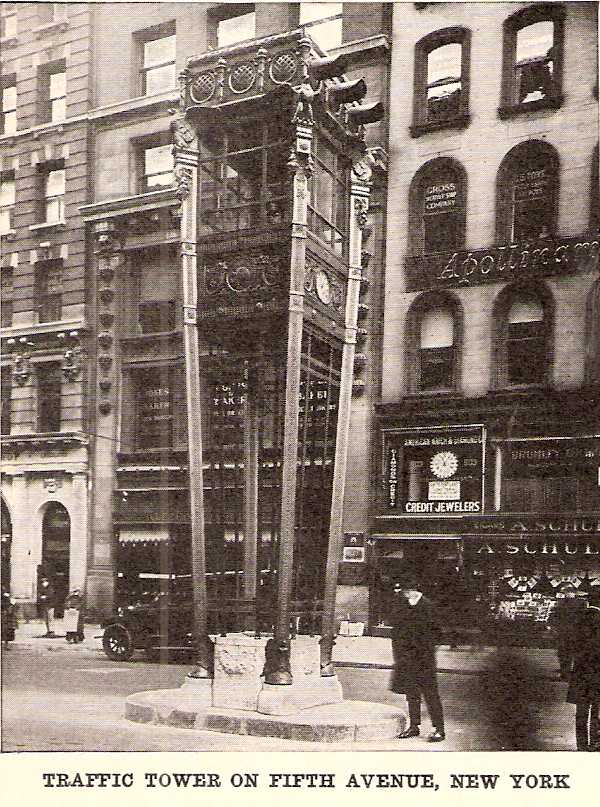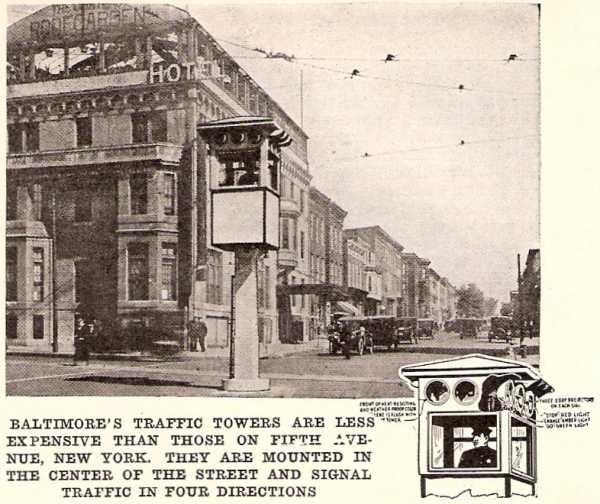Willis Lamm's
|
| History of Traffic Signal Design |

| The End of an Era |
| It was the turn of the century and downtown traffic gridlock was impacting the economic vitality of many American cities. A whole new industry was born to address this problem. |
Click on a photo to bring up a full size view in a new window.

|

Traffic towers were expensive to construct and operate, however they boasted of the advantage that only one traffic officer was needed to direct traffic at the busiest of intersections. |
|
When General Electric bought Morgan's traffic signal patent the world took notice. Inexpensive traffic control devices were no longer novelties. A serious manufacturer with a serious team of engineers was getting into the game. G.E.'s leap into the traffic control industry quickly prompted other well financed companies to follow suit.
Ironically the trend that Morgan precipitated did not develop his design concept. While some successful signal designs included semaphores or moving signs, most fell into the standard that we have come to recognize - devices with colored illuminated round lenses using the standard of red for stop, green for go and in many instances yellow to indicate that the signal was changing. Printed commands were standardized to read "STOP" and "GO." Most of the traffic signal industry was competing over attractiveness of design, practicality of servicing signal heads, resistance to dust and moisture, and optics that could be easily observed and understood under various degrees of ambient light. Some manufacturers developed ornate signals that could be combined with street lamps or other municipal hardware. Others developed rather plain and inexpensive signals for small communities with small budgets.

Continue to More Innovations |

|